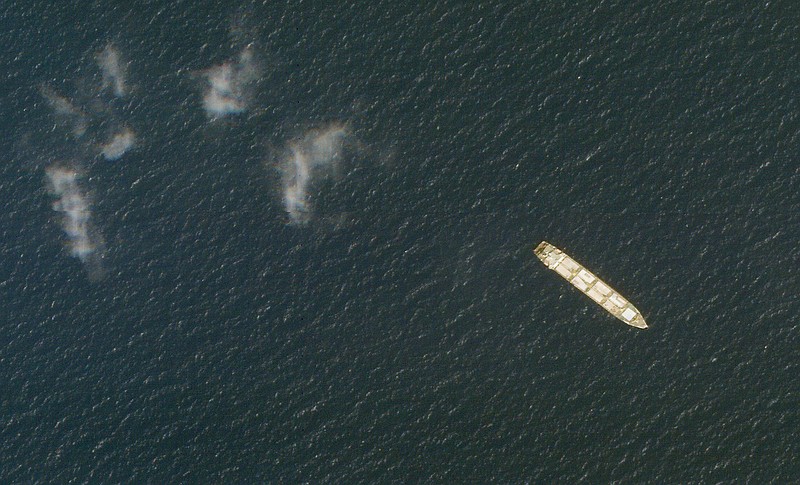DUBAI, United Arab Emirates -- An Iranian ship believed to be a base for the paramilitary Revolutionary Guard and anchored for years in the Red Sea off Yemen has been attacked, Tehran acknowledged Wednesday.
Iran's Foreign Ministry confirmed the attack on the MV Saviz, suspected to have been carried out by Israel -- though Tehran did not immediately blame Israel. The assault came as Iran and world powers sat down in Vienna for the first talks about the U.S. potentially rejoining the tattered deal aimed at curbing Iran's nuclear program, showing events outside the negotiations could derail those efforts.
The ship's long presence in the region, repeatedly criticized by Saudi Arabia, has come as the West and U.N. experts say Iran has provided arms and support to Yemen's Houthi rebels in that country's yearslong war. Iran denies arming the Houthis, though components found in the rebels' weaponry link back to Tehran.
Iran previously described the Saviz as aiding in "anti-piracy" efforts in the Red Sea and the Bab el-Mandeb strait, a crucial chokepoint in international shipping. A statement attributed to Foreign Ministry spokesman Saeed Khatibzadeh described the ship as a commercial vessel.
"Fortunately, no casualties were reported ... and technical investigations are underway," Khatibzadeh said.
In an earlier state TV statement, an anchor cited a New York Times story, which quoted an anonymous U.S. official telling the newspaper that Israel informed America it carried out an attack Tuesday morning on the vessel. Israeli officials declined to comment about the assault when reached by The Associated Press, as did Saviz's owner.
Iran's semiofficial Tasnim news agency, believed to be close to the Guard, reported that a limpet mine planted on Saviz's hull caused the blast. A limpet mine is a type of naval mine that is attached to the side of a ship, usually by a diver.
In a statement, the U.S. military's Central Command only said it was aware of media reports of an incident involving the Saviz and that U.S. forces were not involved.
At the United Nations, spokesman Stephane Dujarric expressed concern over the Saviz incident and urged "concerned parties, including countries in the region, to exercise maximum restraint and refrain from taking any escalatory actions and, in particular, to respect their obligations under international law."
Also Wednesday, Iranian President Hassan Rouhani called the Vienna talks a "success" while speaking to his Cabinet.
"Today, one united statement is being heard that all sides of the nuclear deal have concluded that there is no better solution than the deal," he said.
A European diplomat with knowledge of the talks acknowledged outside events could affect the negotiations.
"We hope that every action, whether it comes from [nuclear deal] parties or external parties, won't undermine the dynamic," he said.
Talks between working groups discussing proposals on American sanctions and Iranian violations of the deal started Tuesday night and continued Wednesday, even after Iran acknowledged the attack. Participants said the Saviz attack had no immediate effect on the meetings.
The Saviz, owned by the state-linked Islamic Republic of Iran Shipping Lines, went to the Red Sea in late 2016, according to ship-tracking data. In the years since, it has drifted off the Dahlak archipelago, a chain of islands off the coast of the African nation of Eritrea. It likely received supply replenishments and switched crew via passing Iranian vessels using the waterway.
Briefing materials from the Saudi military showed men on the vessel dressed in military-style fatigues, as well as small boats capable of ferrying cargo to the Yemeni coast. Those materials also included pictures showing a variety of antennas on the vessel that the Saudi government described as unusual for a commercial cargo ship. Other images showed the ship had mounts for .50-caliber machine guns.
Information for this article was contributed by Nasser Karimi, Mehdi Fattahi, Ilan Ben Zion, Sylvie Corbet, Edith M. Lederer and David Rising of The Associated Press.
